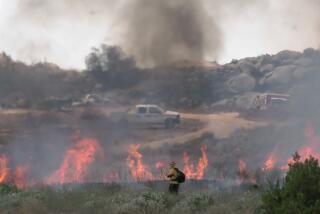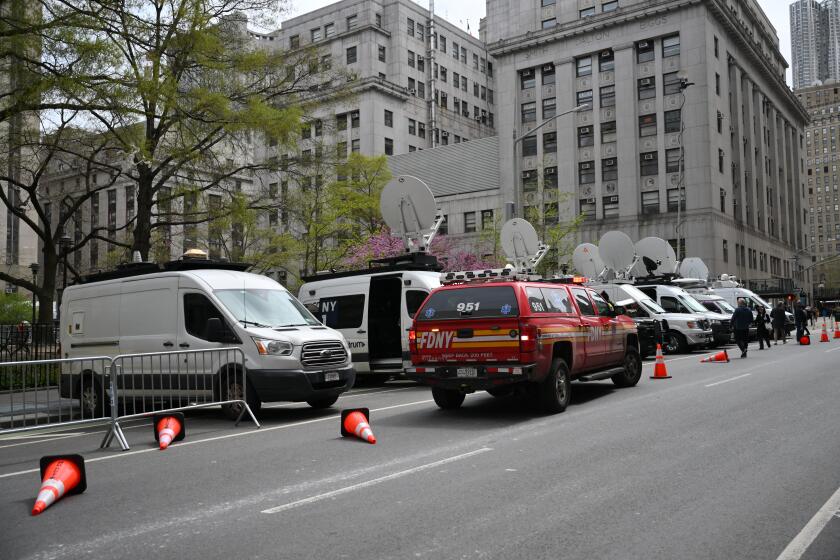Colorado Springs fire destroys at least 346 homes
COLORADO SPRINGS, Colo. — At least 346 homes burned when flames raced unchecked into neighborhoods in and around Colorado Springs, making the Waldo Canyon fire the most destructive in the state’s history, officials said Thursday.
Evacuation orders have forced more than 32,000 people in or west of the state’s second-largest city from their homes. Local officials held a meeting Thursday evening to tell residents on 35 damaged streets whether their homes were still standing.
Earlier in the day, some evacuees tried to glean bits of information from the Internet. Penny Carroll, who had escaped to the town of Monument two days earlier, pored over an aerial photograph of her ravaged Mountain Shadows neighborhood. That’s when she found what appeared to be a roof — an intact roof.
“I have a roof. I’m going with that. Oh, thank God,” Carroll said, allowing joy to enter her voice for the first time since she fled Tuesday afternoon, when she stood on her back deck and watched trees explode into flames as the fire raced over a ridge toward her house.
Cooler weather and rising humidity helped firefighters make significant progress, establishing containment lines around 10% of the fire. The 18,500-acre blaze grew only minimally during the day.
“The weather cooperated with us today like it has in no other day since the fire started,” said Jerri Marr, supervisor of the Pike and San Isabel national forests. The cause of the blaze is under investigation by the U.S. Forest Service.
More than 1,200 firefighters were battling the Waldo Canyon fire, considered the highest priority in the nation because of the potential for winds to again drive the flames into neighborhoods around Colorado Springs.
Aerial photos published by local media showed entire blocks of neighborhoods reduced to piles of charred rubble.
Barb Palmer’s college-age children figured out their home was gone by counting the smoldering foundations on their block from one such image online.
“My son and I were sitting on the couch and he said, ‘Mom, our house did burn,’ ” Palmer said, her voice wavering.
Though Palmer had not received official word from the city by Thursday afternoon, she had already begun to grieve.
“I am trying to process the reality of not having a home,” she said. “I’m OK. We got the kids out, we got the cats. The rest is just stuff. Some of it is irreplaceable, but it’s still stuff. We’ll get through this.”
The blaze is one of several churning through Colorado and across the West. The region has been scorched by triple-digit heat, making its dried-out brush, grass and forests ripe for fire.
Until Thursday, the High Park fire burning west of Fort Collins was the most destructive in Colorado history, destroying 257 homes.
That fire, which broke out June 9 and grew to become the state’s largest, at 87,284 acres, was 75% contained by Thursday afternoon. A storm that dumped water on the blaze aided firefighters, and most of the 2,000 people evacuated had been allowed to return home, said Kathy Messick, a spokeswoman for the Larimer County Sheriff’s Office.
Colorado Springs officials lifted evacuation notices for some residents Thursday evening and warned that the count of destroyed homes could rise as authorities made more thorough inspections. No injuries have been reported, though officials were looking for about 10 people who were unaccounted for.
President Obama plans to visit the area Friday, and has already pledged federal help.
The Waldo Canyon fire started Saturday, and authorities expect it will be weeks before it is fully contained. It spread furiously and out of control Tuesday, when 65-mph winds sent it racing down a hillside and into Colorado Springs subdivisions, nearly tripling in size overnight. In all, the blaze has threatened more than 20,000 homes and 160 commercial buildings, authorities said.
The flames burned some local institutions to the ground, including the Flying W Ranch, a Western-themed tourist attraction known for its chuck-wagon suppers.
It has left locals worried about other landmarks, such as Glen Eyrie, a 67-room castle built by the founder of Colorado Springs. Though initial reports indicated the castle escaped the flames, a message on the facility’s website read: “Please keep praying.”
At the U.S. Air Force Academy, where the Waldo Canyon fire jumped perimeters and charred about 10 acres, more than 2,100 families evacuated from residential areas of the installation still had not been allowed to return Thursday.
But a ceremony welcoming 1,045 new cadets went on as scheduled Thursday to help hold onto some sense of normalcy, even as ribbons of smoke rose from the nearby foothills.
More to Read
Start your day right
Sign up for Essential California for news, features and recommendations from the L.A. Times and beyond in your inbox six days a week.
You may occasionally receive promotional content from the Los Angeles Times.






